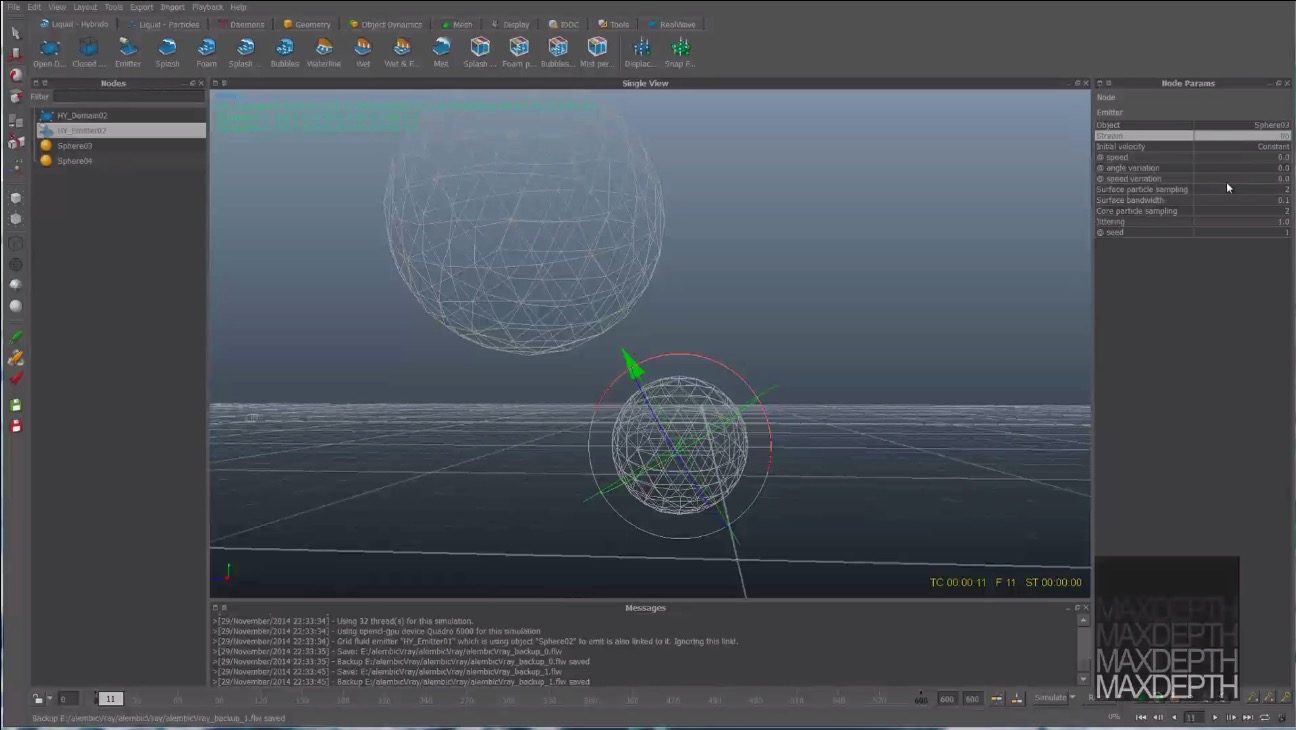
This action can be stopped with the Esc key, but it might take a short while until the process is interrupted, because the current mesh will be finished first. Uncheck the unused channels, but leave “normal” and “texture” active in any case. Of course the channels have to be activated under “Particle Channels” before – otherwise they remain empty.Įnable “Mesh sequence (.md)” and leave “Mesh cache (.bin)” activated, because it is required by RealFlow. MD provides the most sophisticated method, because here you can also decide which channels you want to include. There you will find several file formats to choose from.īIN is the standard format and supports only a few basic channels.ĪBC (Alembic) can store the entire range of channels. RealFlow's “Particle mesh” engine provides a wide variety of attributes to save with the mesh:Įnable/disable the appropriate channels with “Yes” and “No”.įor the second step, the channels have to be exported with the mesh files: With a velocity channel, for example, it is possible to create the whitening effect of a rapidly moving fluid. Foam with SPH Fluids - ChannelsĬhannels are essential for realistic rendering and they help you to visualize changes in speed, age, or density – to name but a few. This results in visible gaps in the final render (see " Foam with SPH Particles" for more information about the simulation's foam pass). In this case, "Steps" should not be too high, because otherwise the mesh will shrink, and you might lose the connection between the mesh and the foam particles. Always start with moderate values between 8 and 32. With settings greater than 100 you can often observe the look of liquid metal which completely destroys the impression of a watery or milky fluid. With higher settings the borders become sharper. “Steps” tells the engine how often the relaxation filter will be applied. The mesh's borders are a little too round, and this is something that can be fixed with the entries from “Filters”:įilters > Filter > Relaxation > Steps > 16


As you can see, the result is already very good. If you need a higher level of detail just decrease “Polygon size”. Now, make one more adjustment to get a better representation of the particle cloudĬlick on the “Build Mesh” button from the “Mesh” shelf to create the mesh for the current frame. Foam with SPH Fluids – SettingsĪ very good and reliable way to start with RealFlow's “Particle mesh” is to use very similar settings for “Polygon size” and “Radius”: If it is too big the fluid's borders become thick and you will lose detail. If “Radius” is too small then the spheres might not interpenetrate and you will see a torn fluid with holes. The radius of these spheres is adjusted with the emitter-related settings:Ĭlick on the mesh node's “Square01” alias. Now click on the emitter alias and you will find two more panels: when you create a mesh, the engine puts small spheres at the particles' positions and blends them to create a coherent surface. The most important settings are located under “Mesh”. The mesh node now has an alias of “Square01” attached.Ī click on the mesh node itself reveals a wide variety of settings under “Node Params”, but not all of them are relevant for a good mesh. Nodes > ParticleMesh01 > right-click > Insert emitters > choose “Square01” Choose a frame with lots of details, and follow these instructions: This scene contains two emitters, but only the “Square01” node will be meshed, while the fluid from “Container01” should be rendered as particles. Shading modes are toggled with the 7, 8, 9, and 0 keys. Viewport perspective is changed with the 1, 2, 3, and 4 keys. RealFlow nodes can be moved, scaled, and rotated with the W, R, and E keys.

Realflow 2014 keyframe particule how to#
In this workshop you will learn how to mesh the results from the “ Foam with SPH Fluids” and “ Shattered Glass” lessons.Ī mesh with particles from the "Foam with SPH Fluids" tutorial.ġ “Particle mesh” node (not the “legacy” engine)Īll scene elements can be added from RealFlow's “Edit” menu: If you went through the fluid tutorials you might have been missing one thing: mesh creation.


 0 kommentar(er)
0 kommentar(er)
